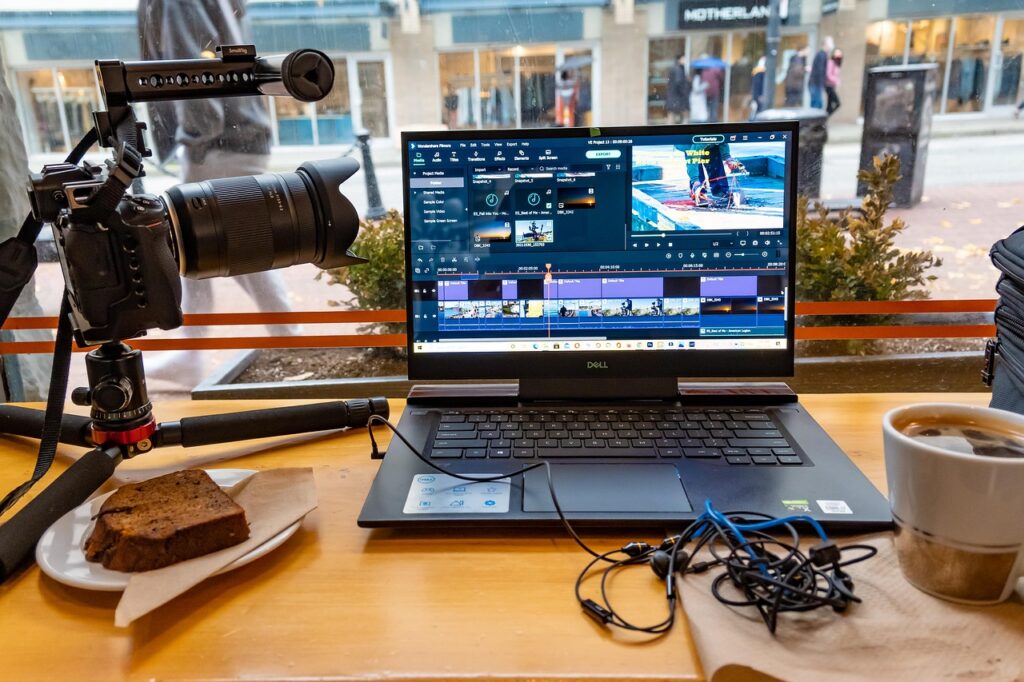Video Editors and Colorists Are Not the Same: Understanding the Difference 3
Many people confuse video editors and colorists, thinking they handle similar tasks in post-production. Yet, these two roles are quite different, and each plays a unique part in shaping the final look and feel of a video. Knowing their distinct functions helps give credit where it’s due and improves the production process. The Role of a Video Editor Core Tasks and Responsibilities Video editors assemble raw footage, turning hours of clips into a compelling story. They decide what stays and what goes, focusing on flow and narrative. Beyond cutting and arranging scenes, editors add sound effects, dialogue syncing, transitions, and sometimes graphic effects. The end goal is a polished, coherent video that tells the intended story clearly. Technical Skills and Tools Video editors commonly work with programs like Adobe Premiere Pro, Final Cut Pro, and Avid Media Composer. Their skills are a mix of technical know-how and storytelling ability, timing cuts to music or dialogue and ensuring the pace keeps viewers engaged. Editors often blend creativity with precision. Work Environment and Career Path Editors usually work in studios, production houses, or freelance settings. Many start as assistant editors, gradually learning the ropes before leading projects themselves. It’s a career path that values experience, technical skills, and a good eye for storytelling. Photo by Ron Lach The Role of a Colorist Color Correction vs. Color Grading Colorists focus on color — but their work is both technical and artistic. Color correction fixes inconsistencies in lighting or color caused during filming. On top of that, colorists perform color grading, adding hues and tones to create mood, style, or atmosphere. This process turns raw footage into visually striking scenes. Technical Expertise and Tools Colorists use specialized tools like DaVinci Resolve and Baselight. They rely on calibrated monitors and sometimes control panels designed for precise adjustments. Their expertise lies in balancing colors, adjusting brightness, contrast, and saturation, and ensuring footage matches across shots. Collaboration and Workflow Colorists work closely with directors and cinematographers. Their input can shape the final look, sometimes shifting a scene’s mood completely. The workflow is iterative, often involving back-and-forth tweaks until the desired visual tone is achieved. Key Differences Between Video Editors and Colorists Focus and Skill Sets Video editors focus on story structure and pacing, weaving footage into a narrative. Colorists focus on the image’s visual feel, mood, and consistency. Both require artistic skills, but their priorities differ. Tools and Techniques Editors use software geared toward cutting, arranging clips, and syncing sound. Colorists use color grading tools and hardware made for detailed color work. Each role demands a different technical skill set. When the Roles Overlap In smaller projects, editors sometimes handle color grading because of budget limits. However, professional colorists have specialized experience that elevates the visual quality beyond basic adjustments. Why Professional Colorists Matter in Post-Production Enhancing Mood and Storytelling Color affects how a scene feels—a warm tone may feel cozy, a cool tone cold or eerie. Colorists use grading to reinforce the story, making visuals emotionally powerful. Ensuring Technical Accuracy and Consistency They also make sure colors remain consistent across different shots and meet broadcast standards. Without this step, footage can look patchy or unprofessional. Choosing Between a Video Editor and a Colorist for Your Project Budget and Project Size Considerations For tight budgets or simple projects, a video editor might cover some color grading tasks. Larger or high-quality productions benefit from hiring both specialists to get the best results. Desired Visual and Narrative Outcomes If your focus is storytelling flow, a skilled editor is key. If mood, tone, and polished visuals matter most, investing in a colorist pays off. Conclusion Video editors and colorists play separate yet essential roles in video production. Editors craft the story and flow, while colorists create the visual mood and consistency. Understanding these differences helps you value each expert’s work and improves your video’s overall quality. For more insights on video editing and color grading, the Creative COW forum offers discussions on the topic, and StudioBinder provides a detailed look at what a colorist does in film production. Also, Comeet’s guide on video editor job descriptions gives a clear idea of editing responsibilities in today’s market.
Video Editors and Colorists Are Not the Same: Understanding the Difference 3 Read More »


